
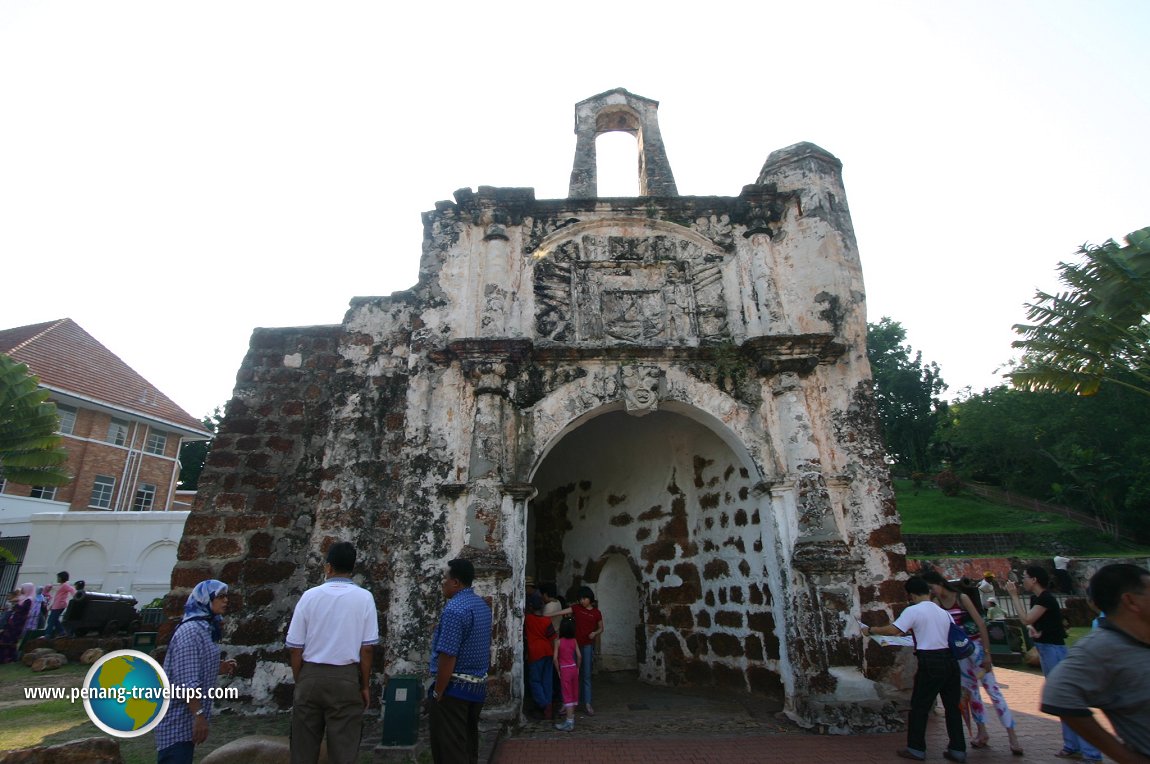 Porta de Santiago (9 July, 2005)
Porta de Santiago (9 July, 2005)
Porta de Santiago (GPS: 2.19187, 102.25028), or Gate of St. James, is the sole remaining gateway into the fortress built by the Portuguese when they conquered Malacca in 1511. For many decades, older textbooks and tourist brochures erroneously called Porta de Santiago as A Famosa.
The name A Famosa actually refers to the citadel which the Portuguese built upon capturing Malacca. Immediately after Malacca fell, they used forced labour to built a temporary fort to counter Malay attacks, while they worked on the main fort, which they nicknamed "A Famosa", or officially, the Fortaleza de Malaca, or the Fortress of Malacca. (However the name Fortaleza de Malaca usually refers to the fortification around St Paul's Hill that came after the construction of the initial citadel.) The A Famosa took another five months to built. Due to the heat and insufficient food, many labourers died in building the fort. The building material was obtained by dismantling Malay graves, mosques, and other buildings.
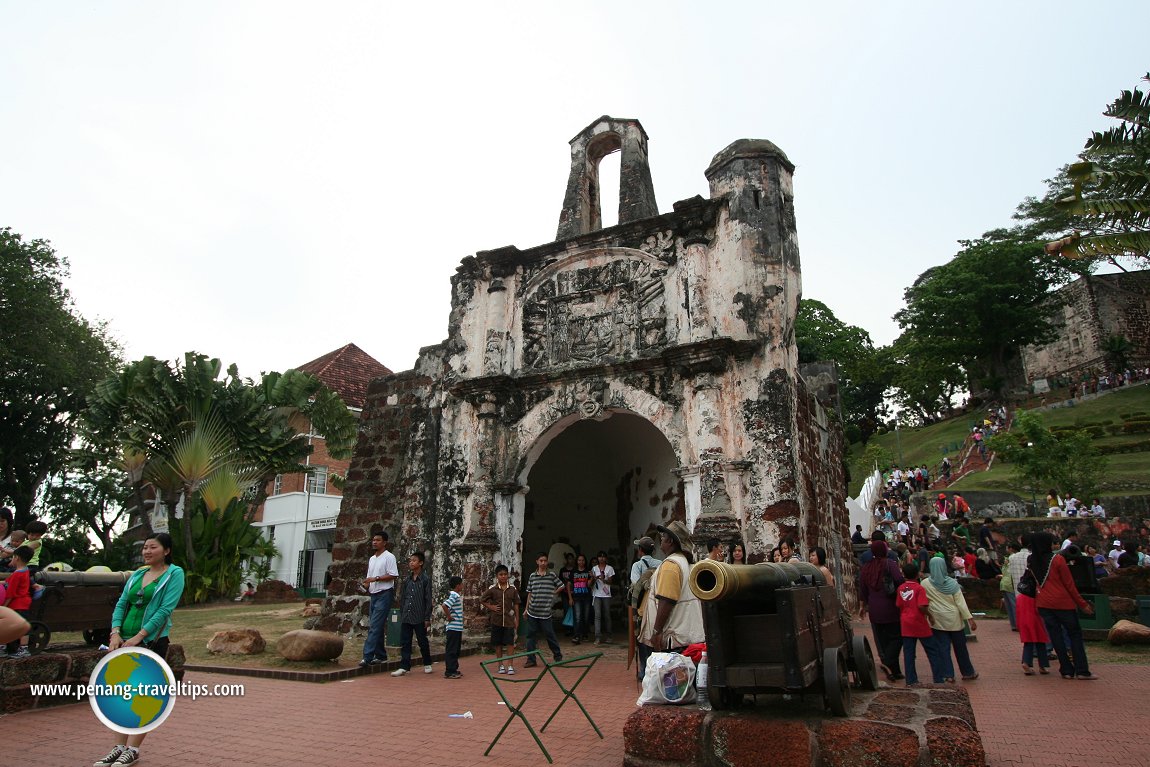 Porta de Santiago, Malacca (1 May, 2009)
Porta de Santiago, Malacca (1 May, 2009)
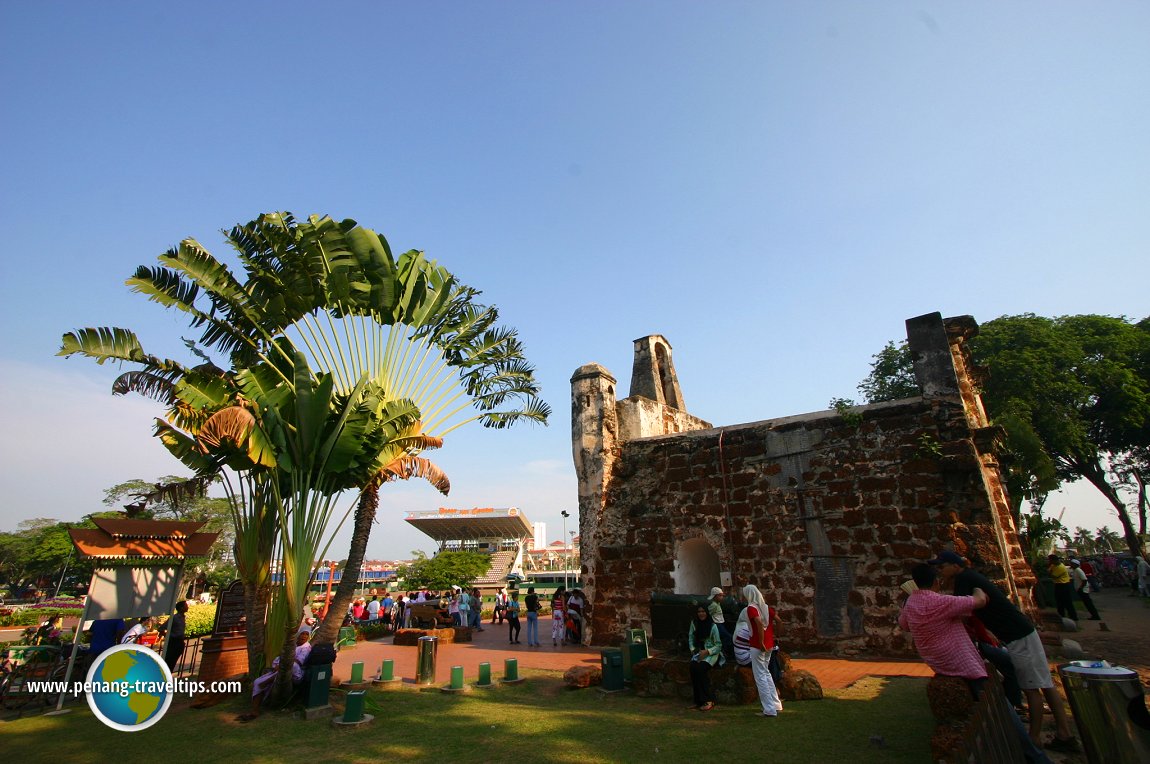 Side view of Porta de Santiago (9 July, 2005)
Side view of Porta de Santiago (9 July, 2005)
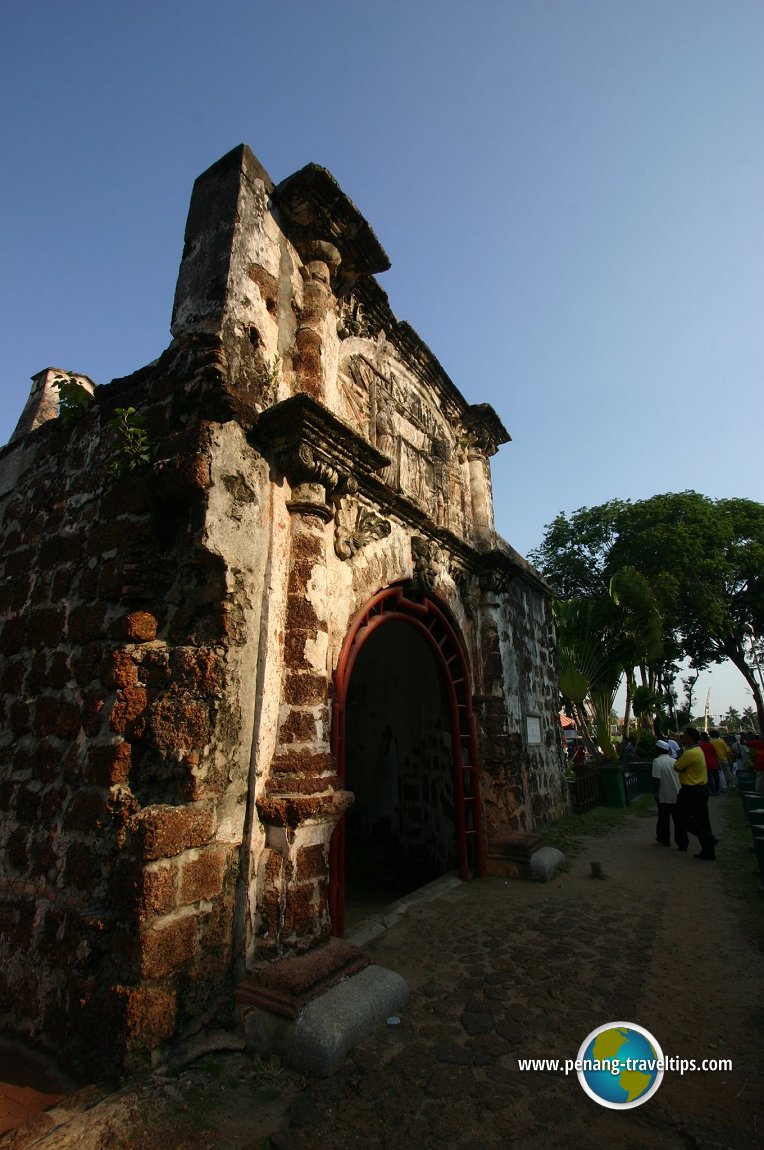 Rear view of Porta de Santiago (9 July, 2005)
Rear view of Porta de Santiago (9 July, 2005)
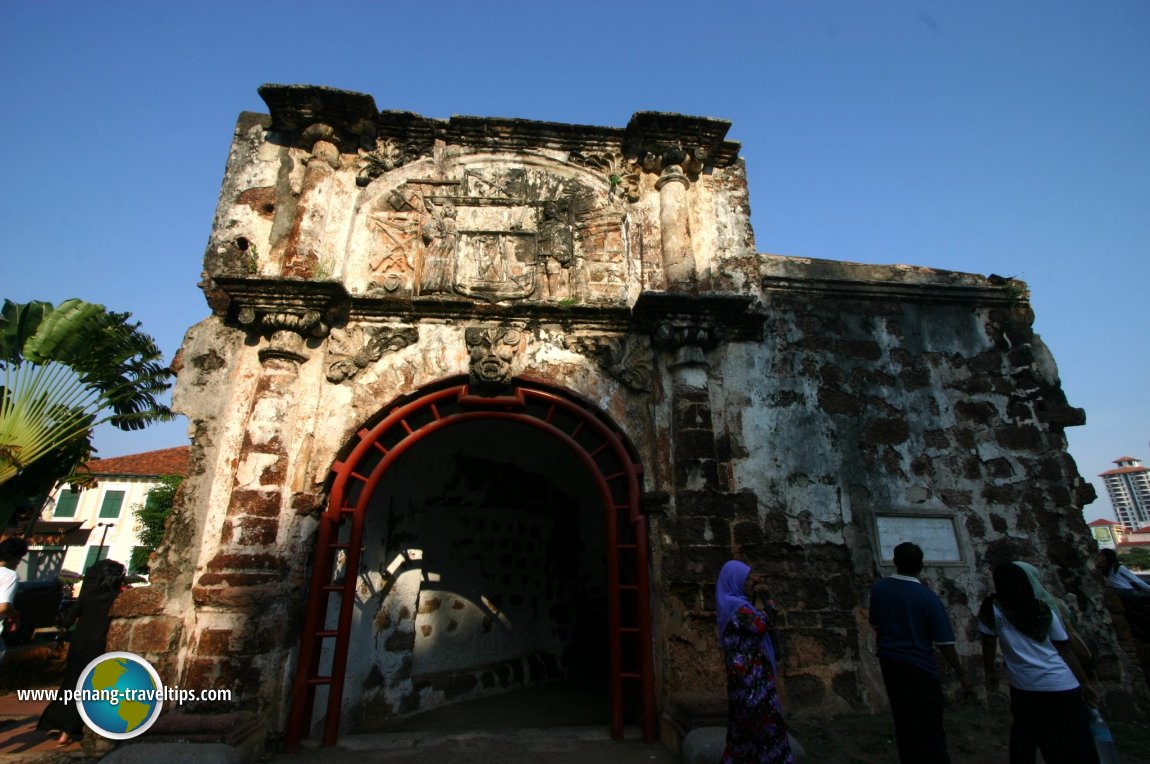 View of Porta de Santiago from what would be the inside of the Malacca Fort (9 July, 2005)
View of Porta de Santiago from what would be the inside of the Malacca Fort (9 July, 2005)
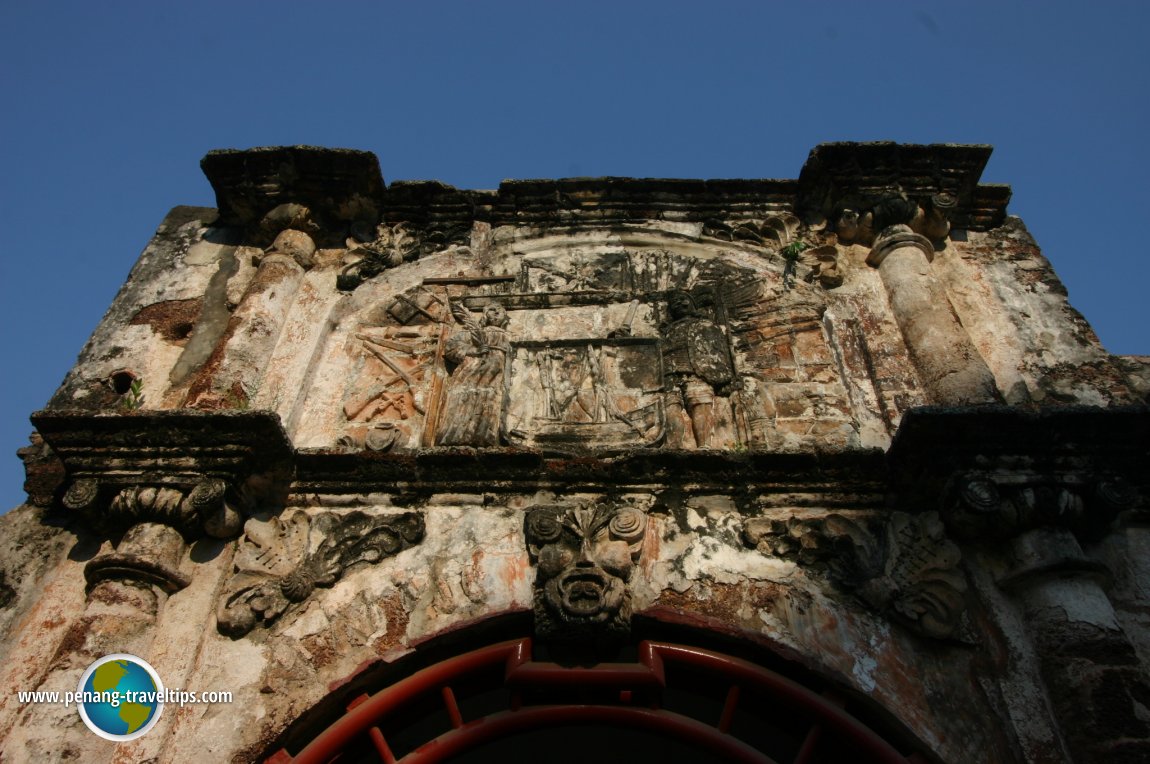 Close up view of the crest on Porta de Santiago (9 July, 2005)
Close up view of the crest on Porta de Santiago (9 July, 2005)
The completed fortress had four towers, or bastions, and walls that were 2.4 metres thick. The towers were called Baluarte San Pedro, Baluerte de las Virgenes, Baluerte Madre de Dios, Baluerte Santo Domingo, and Baluerte de Santiago. By 1583, Malacca had become a fortified city protected by seventy canons aimed in all directions.
The fortress was so well built that it helped the Portuguese ward off all forms of attacks. In order to capture Malacca, the Dutch laid siege around the fortress for five months with the help of Johor, while Malacca's citizens, trapped inside, were reduced to eating cats, rats, and there was a case of a women eating her dead infant. Finally, on 14 January 1641, the Dutch stormed into the fort through the Santo Domingo Gate, by which time, the casualty totalled over 7,000, from the famine, disease and gunfire.
Upon capturing the fortress, the Dutch repaired and renovated it, and placed their coat of arms above the gates. This can still be seen today at Porta de Santiago, the remaining gate, with the inscription "Anno 1670".
When Napoleon's army invaded Holland in 1795, Prince William of Orange fled to London, where he commanded all Dutch settlements to admit British troops, to prevent them from falling into the hands of the French. As a result, the British was able to enter Malacca without fighting for it.
Upon receiving Malacca, the British was not keen to keep it, nor do they want to spare their troops to defend Malacca. Leaving such a formidable fortress without proper defence would be a liability, if it falls into the wrong hands. So they were not keen for Malacca to return to Dutch hands with such a strong fortress. They wanted to wipe Malacca off the map, and transfer its population to Penang. As for the fort, they considered it a liability, and wanted to have it demolished. Governor William Farquhar, who was governor of Malacca from 1803 until 1818, was given the task to demolish the fortress. At first he ordered convict labourers to dismantle the fortress stone by stone, with pickaxes and crowbars. When the walls - some parts of it reaching 4.5 metres thick - seem too formidable, he decided on a more explosive plan. He planted boxes of gunpowder around the foot of the fortress. When the gunpowder exploded, it sent pieces of the fort, some as big as boulders careening into the sky and dropping into the sea.
The demolition was already in an advanced stage when a young British civil servant in Penang arrived in Malacca on sick leave. He was Thomas Stamford Raffles. Upon learning about the demolition, he wrote a report persuading his superiors to keep the fort. According to Raffles, keeping Malacca carries more prestige in the eyes of the natives, than holding on to a new settlement like Penang. He argued that, considering they already have a cleared piece of valuable property, namely Malacca, why should they give it up unless forced.
His argument help saved the remaining piece of the fortress, which is the gate of Santiago.
The British remained in Malacca until 1818. With the end of the Napoleonic wars, they returned it to the Dutch. It remained in Dutch hands for another seven years, until the 1824 London agreement, when they swap it for Bencoolen in Sumatra.
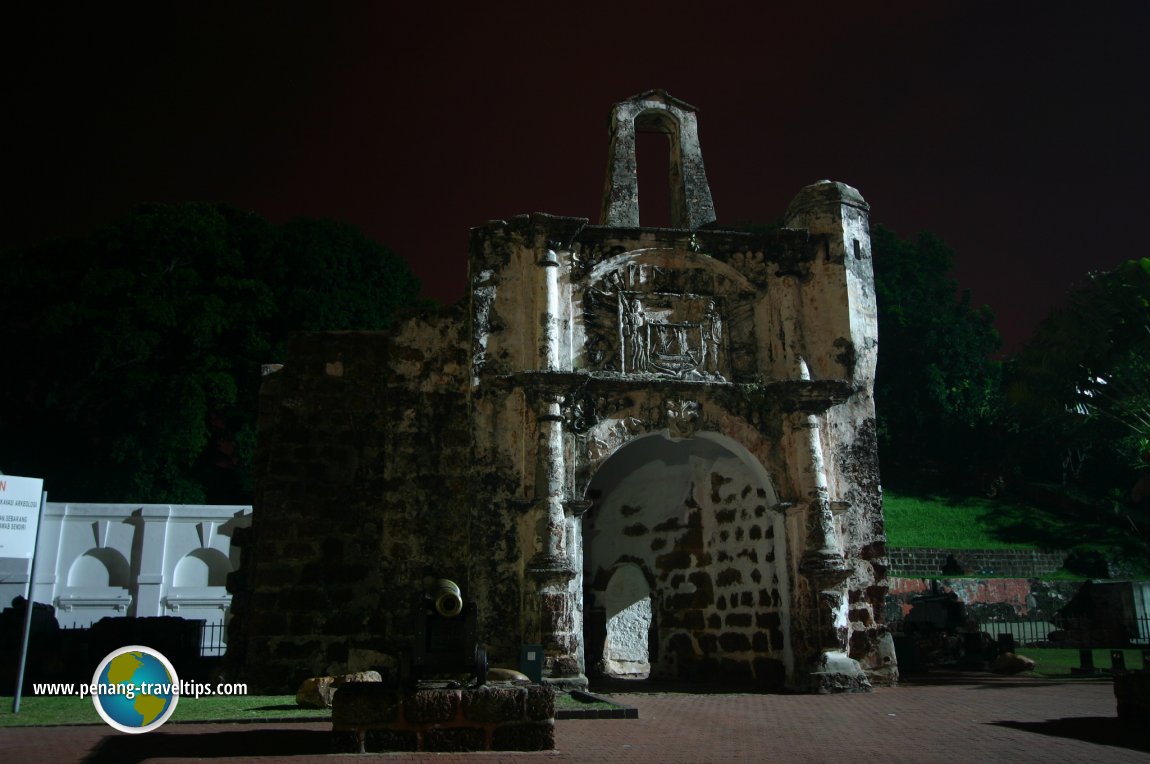 Porta de Santiago at night (9 July, 2005)
Porta de Santiago at night (9 July, 2005)
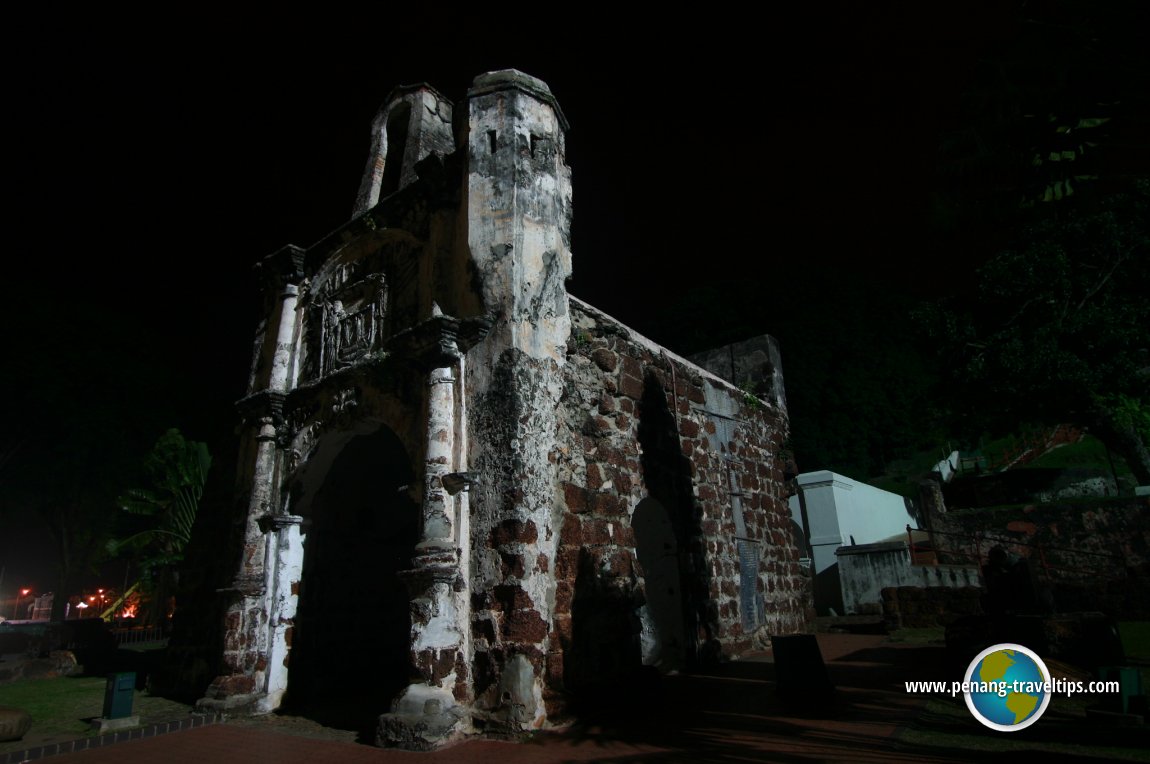 Another shot of Porta de Santiago at night (9 July, 2005)
Another shot of Porta de Santiago at night (9 July, 2005)
Porta de Santiago is  on the Map of Malacca
on the Map of Malacca
Discover Malacca; Return to Malacca Fort mainpage; List of Forts in Malacca and Forts in Malaysia
 Map of Roads in Malacca
Map of Roads in Malacca
 Latest updates on Penang Travel Tips
Latest updates on Penang Travel Tips
About this website

Dear visitor, thank you so much for reading this page. My name is Timothy Tye and my hobby is to find out about places, write about them and share the information with you on this website. I have been writing this site since 5 January 2003. Originally (from 2003 until 2009, the site was called AsiaExplorers. I changed the name to Penang Travel Tips in 2009, even though I describe more than just Penang but everywhere I go (I often need to tell people that "Penang Travel Tips" is not just information about Penang, but information written in Penang), especially places in Malaysia and Singapore, and in all the years since 2003, I have described over 20,000 places.
While I try my best to provide you information as accurate as I can get it to be, I do apologize for any errors and for outdated information which I am unaware. Nevertheless, I hope that what I have described here will be useful to you.
To get to know me better, do follow me on Facebook!
Copyright © 2003-2025 Timothy Tye. All Rights Reserved.

 Go Back
Go Back